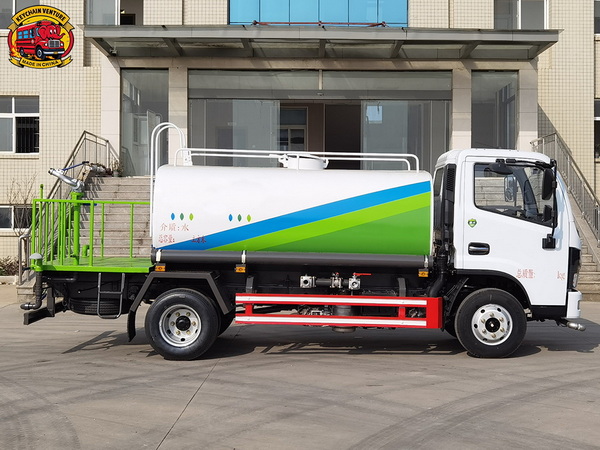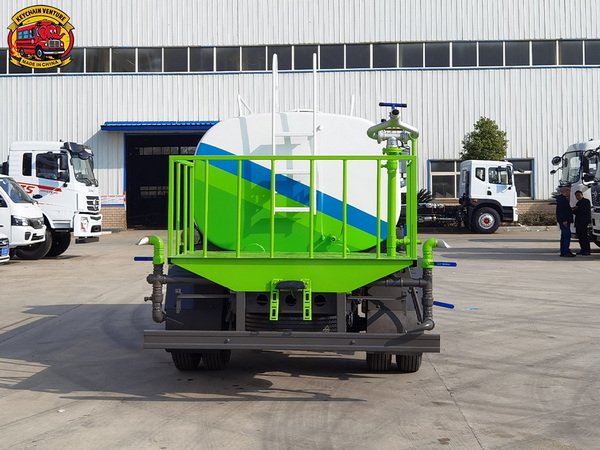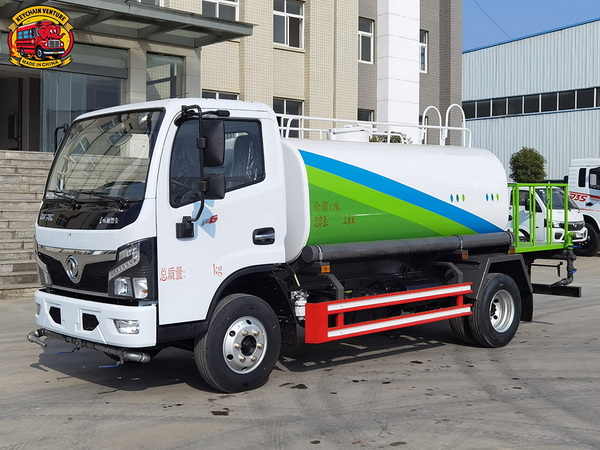Views: 222 Author: Amanda Publish Time: 2025-09-22 Origin: Site








Content Menu
● Understanding the Importance of a Water Truck Spray Bar
● Key Design Considerations for a Water Truck Spray Bar
>> Durability and Environmental Adaptability
● Materials and Tools Required
>> Nozzles
>> Tools
● Step-by-Step Construction of Your Water Truck Spray Bar
>> Step 1: Measure and Cut the Pipe
>> Step 2: Mark and Drill Nozzle Holes
>> Step 4: Assemble Pipe Fittings
>> Step 5: Mount the Spray Bar to the Water Truck
>> Step 6: Connect to Pump System
● Maintenance for Long-Term Spray Bar Performance
● Enhancing Spray Bar Functionality
● Safety Tips When Building and Operating a Water Truck Spray Bar
● Frequently Asked Questions (FAQ)
>> 1. What pipe material is best for fabricating water truck spray bars?
>> 2. How do I choose the right nozzle type for my water truck spray bar?
>> 3. Can a spray bar be adjusted for different water pressure levels?
>> 4. What maintenance is necessary to keep a spray bar functioning efficiently?
>> 5. Is welding necessary to assemble a durable water truck spray bar?
Water trucks are indispensable assets across multiple industries such as construction, agriculture, municipal maintenance, and mining. A vital component of any water truck is the spray bar, which facilitates efficient water distribution by spraying water across roads, dust control sites, crops, or cleaning locations. Making a custom water truck spray bar tailored to your specific application can dramatically enhance operational efficiency, reduce water waste, and extend the lifespan of your equipment.
This comprehensive guide covers everything you need—from design principles and material selection to assembly, installation, and regular maintenance—to build a durable and high-performance spray bar compatible with your water truck.

A spray bar is essentially a horizontal pipe fitted with a series of nozzles that disperse water evenly over a wide area. Unlike a single nozzle setup, the spray bar enables coverage of larger surfaces in a controlled manner. This uniform water distribution plays a pivotal role in suppressing dust on construction sites, irrigating crops efficiently, or controlling mud and sediment buildup on roads.
The quality, design, and installation of the spray bar directly influence the water truck's productivity, water consumption, and effectiveness in performing tasks.
Before constructing the spray bar, determine the optimum width it must cover. Typical spray bars range from 6 feet for narrow applications to over 12 feet for highways or large agricultural fields. The width influences the pipe length, nozzle number, and overall water flow requirements.
Your pump capacity determines the flow rate and pressure achievable. This metric must align with nozzle specifications to guarantee consistent spray patterns without drips or gaps.
Water truck spray bars use different nozzle types to create varied spray patterns:
- Flat Fan Nozzles: Produce a wide, fan-shaped spray ideal for broad coverage and dust suppressant applications.
- Cone Nozzles: Generate circular spray patterns that concentrate water on smaller sections.
- Adjustable Nozzles: Allow on-site changes of spray angles and patterns for flexibility.
Since water trucks operate in rugged outdoor conditions, spray bars must be corrosion-resistant and robust. Material choice and mounting design should account for vibrations, ground clearance, and easy access for maintenance.
- Stainless Steel: Offers strong corrosion resistance and long life, suitable for chemically treated water.
- Galvanized Steel: Cost-effective with acceptable corrosion protection for most applications.
- Aluminum: Lightweight and corrosion-resistant but less durable under heavy mechanical stress.
- Brass or stainless steel nozzles are preferred due to their longevity and resistance to clogging.
- Teflon tape or thread sealant to secure nozzle connections without leaks.
- Couplings, elbows, and tees sized to match the pipe diameter.
- Mounting brackets, clamps, and vibration dampers to secure the spray bar to the truck chassis.
- Welding machine or heavy-duty drill with metal bits.
- Measuring tape, pipe cutter, wrench, and safety gear.
Start by measuring the truck width and the desired spray coverage. Add a few inches to account for end fittings and mounting adjustments. Use a pipe cutter or saw to make a clean, straight cut.
Calculate the number of nozzles needed based on your pipe length and desired spacing, typically between 6 to 12 inches apart. Mark drilling points with a pencil or marker and use a metal drill bit sized to fit nozzle connectors snugly.
Wrap each nozzle's threads with Teflon tape to prevent leaks. Screw the nozzles into the drilled holes carefully, ensuring even alignment along the pipe for symmetrical spraying.
Attach the pipe ends to the water inlet and outlet fittings, and include any valves or pressure regulators in the line to control flow and pressure.
Secure the spray bar horizontally on the rear or underside of the water truck chassis using brackets and clamps. Use vibration dampers or rubber mounts to absorb shocks and protect connections during travel on bumpy roads.
Attach the spray bar inlet to the truck's pump discharge hose. Ensure all connections are tight and water-tight.
Turn on the water pump to test the spray bar. Inspect all nozzles for even spray distribution. Check for leaks or blockages in the pipeline. Adjust nozzle angles, pressure valves, or mounting angles to improve spray patterns.

- Check for clogged nozzles or mineral deposits.
- Tighten loose fittings and brackets.
- Inspect for corrosion and address it early.
Remove nozzles periodically and soak them in a mild acid solution (vinegar or descaling agents) to dissolve deposits. Rinse thoroughly before reinstalling.
Regularly monitor the water pump pressure to avoid damage to spray nozzles or pipes. Use pressure relief valves if necessary.
In cold climates, drain the spray bar and store it indoors during winter to avoid freezing damage.
Consider designing spray bars with foldable or telescoping sections. This allows operators to adjust coverage width quickly depending on the task.
Integrate solenoid valves and electronic controls to adjust spraying dynamically based on speed or location.
Combine spray bars with water recycling tanks on the water truck to conserve water during repeated passes on large areas.
- Always wear protective gear like gloves and eye protection during drilling and welding.
- Verify all mounting points thoroughly before operating the water truck.
- Avoid overpressurizing the system as it may cause pipe bursts or nozzle damage.
- Ensure spray patterns do not pose risks to operators or pedestrians during operation.
Building a water truck spray bar custom-made to your operational needs can significantly elevate the efficiency of your water truck's applications. From careful material selection and precise nozzle installation to secure mounting and diligent maintenance, each step ensures your spray bar provides even, reliable water distribution for dust control, irrigation, road maintenance, and more. The investment in a well-designed spray bar pays off through enhanced performance, minimized water wastage, and extended equipment lifetime.

Stainless steel is ideal for longevity and corrosion resistance, but galvanized steel and aluminum are cost-effective alternatives depending on use conditions.
If you require broad coverage for dust suppression, flat fan nozzles work best; cone nozzles suit more precise watering needs.
Yes, installing pressure regulators or valves can help maintain optimal pressure, adapting to varying pump capacities.
Regular cleaning of nozzles, tightening of fittings, and monitoring for corrosion or blockages are essential.
Welding offers strength and permanence but mechanical fittings and clamps can be sufficient for easily serviceable or modular spray bars.